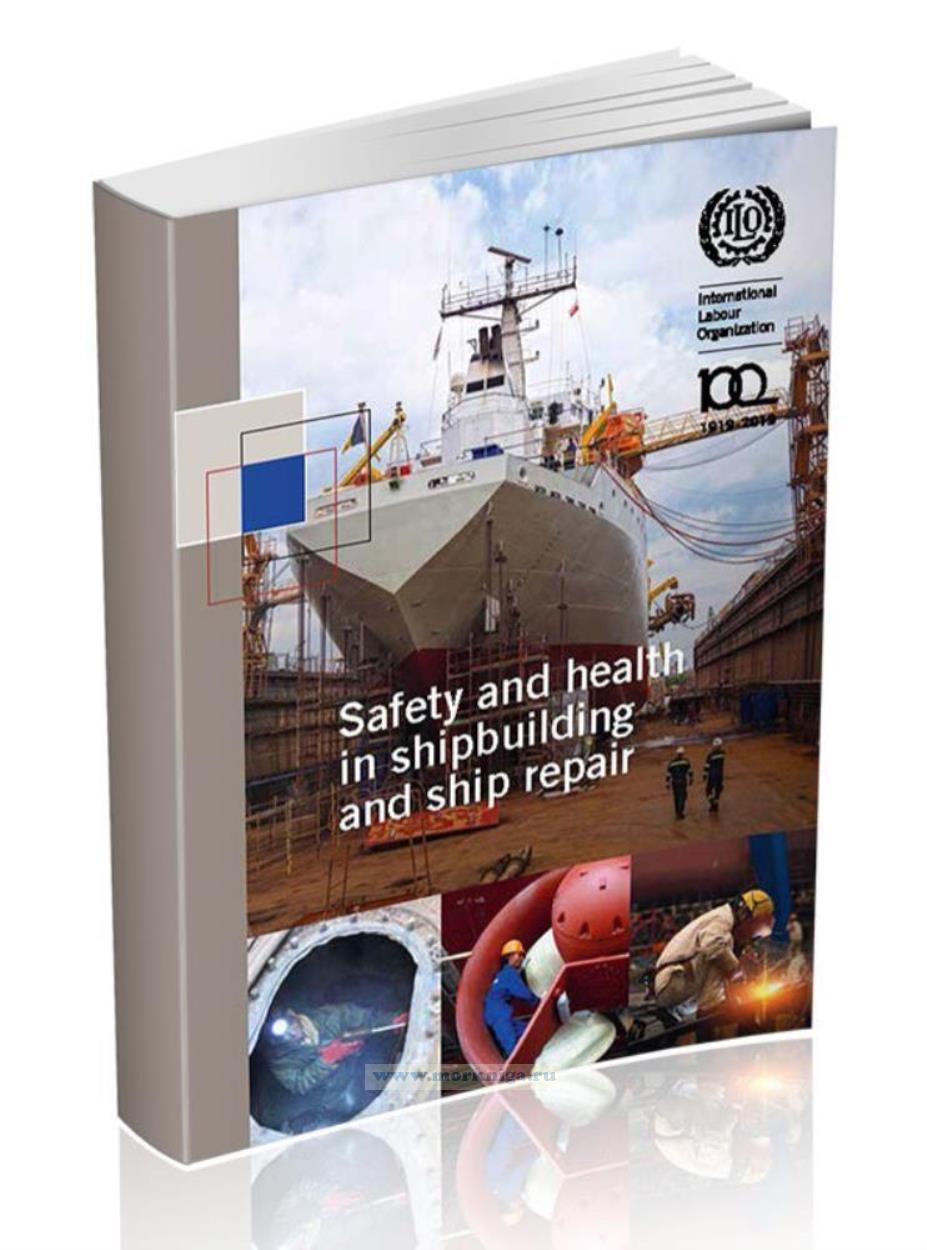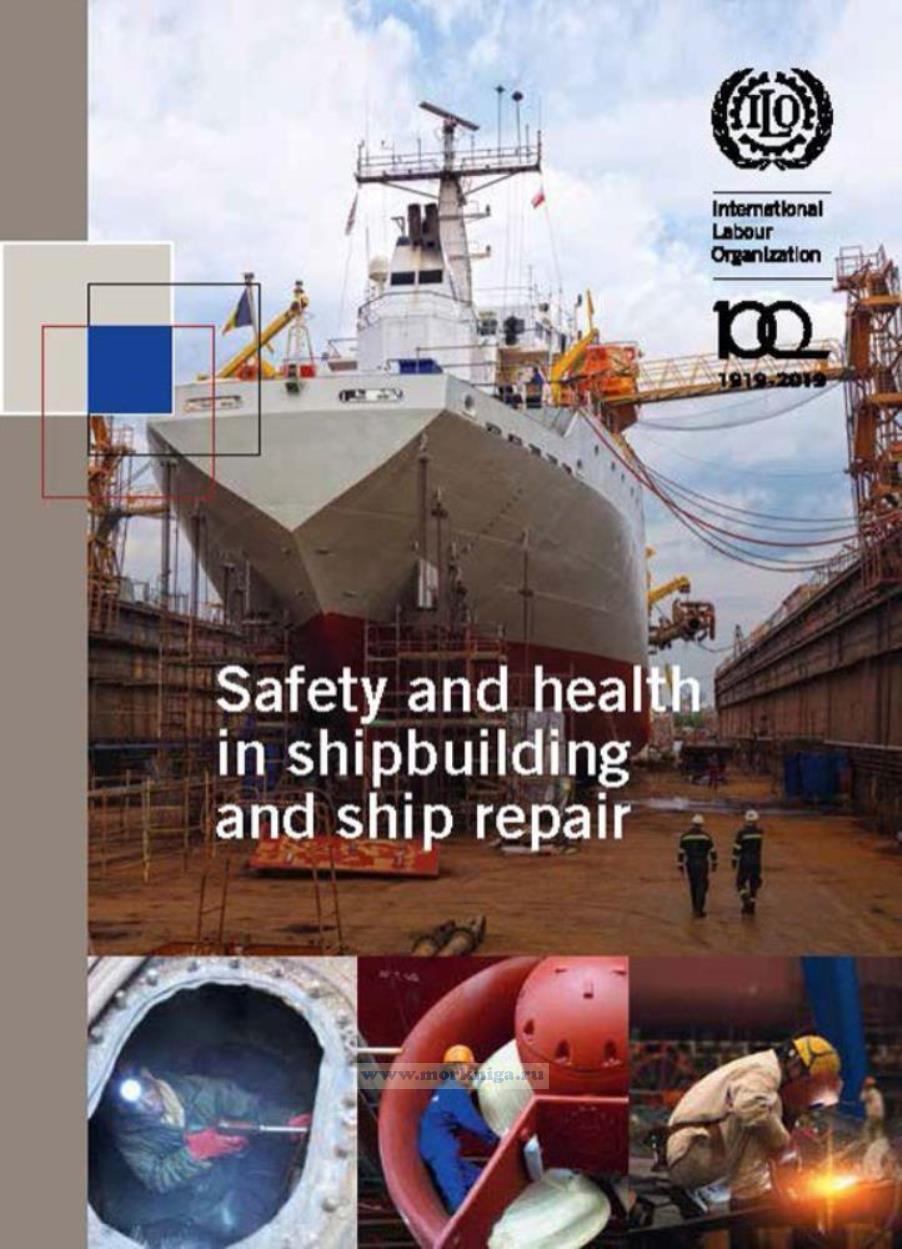Сб с 10 до 16
Safety and health in shipbuilding and ship repair/Безопасность и гигиена труда в судостроении и судоремонте
Книга на английском языке.
The ILO Code of practice on safety and health in shipbuilding and ship repair was adopted by a Meeting of Experts held in Geneva from 22 to 26 January 2018, in accordance with a Governing Body decision at its 329th Session (March 2017).The meeting was attended by 22 experts and their advisers - eight experts nominated by the Governments of Brazil, China, Italy, Japan, Republic of Korea, Nigeria, Philippines and Singapore; eight nominated by the Employers’ group of the Governing Body; and six nominated by the Workers’ group of the Governing Body. Expert observers from other governments, and observers from intergovernmental and non-governmental organizations, also attended the meeting.The good spirit of cooperation among all participants paved the way for developing consensus on a new, comprehensive and practical code that will help to raise the profile of safety and health issues in shipbuilding and ship repair in all parts of theworld, and contribute to the health, morale and well-being of workers in the industry.
Contents
Preface
Sectoral codes of practice
Acronyms, abbreviations and definitions
Introduction
1. General provisions
1.1. Purpose and objectives
1.2. Application and scope
1.3. Reference to ILO instruments
2. General obligations, responsibilities, duties and rights
2.1. Cooperation
2.2. Competent authority
2.2.1. General provisions
2.2.2. Inspectorates
2.3. Employers
2.4. Workers
2.5. Suppliers, manufacturers and designers
2.6. Contractors and subcontractors
3. Occupational safety and health management systems
3.1. Introduction
3.2. Occupational safety and health policy
3.2.1. Worker participation
3.3. Initial review
3.4. Hazard identification, risk assessment and preventive and protective measures
3.4.1. Hazard identification
3.4.2. Risk assessment
3.4.3. Risk control
3.4.4. Evaluation
3.5. Contingency and emergency preparedness
3.5.1. Emergency preparedness
3.5.2. First aid
3.5.3. Rescue
4. Management of change
5. Reporting, recording and notification of work-related injuries and diseases, ill health and dangerous occurrences
5.1. General provisions
5.2. Reporting at the level of the facility
5.3. Recording at the level of the facility
5.4. Notification of work-related injuries
5.5. Notification of occupational diseases
6. Safety and health organization
6.1. Occupational health services
6.2. Safety and health officers
6.3. Safety and health committees
6.4. Worker safety and health representatives
7. General preventive and protective measures
7.1. General provisions
7.2. Means of access and egress
7.3. Prevention of unauthorized entry
7.4. Roadways, quays, yards and other places
7.5. Transport of workers by water
7.6. Multiple people carriers
7.7. Heating, cooling and ventilation
7.7.1. Heating and cooling
7.7.2. Ventilation
7.8. Housekeeping
7.9. Dangerous atmospheres and confined spaces
7.10. Scaffolds
7.10.1. General
7.10.2. Materials
7.10.3. Design and construction
7.10.4. Prefabricated scaffolds
7.10.5. Use of scaffolds
7.10.6. Lifting appliances on scaffolds
7.10.7. Inspection and maintenance
7.10.8. Dismantling
7.10.9. Suspended scaffolds
7.10.10. Platforms attached to lifting appliances and mobile elevated working platforms
7.10.11. Mobile scaffolding
7.11. Ladders
7.12. Precautions against the fall of persons and materials
7.13. Fire prevention and firefighting
7.14. Means of escape in case of fire or other dangers
7.15. Signs, notices, colour codes and communication
8. Operational planning
8.1. General requirements
8.2. Preparation of safe workplans
8.3. Permit-to-work system
8.3.1. Application
8.3.2. Implementation of permit-to-work system
9. Health and safety requirements for the most common hazardous operations and tasks in the construction and repair of ships
9.1. Docks and docking operations
9.2. Hull construction
9.2.1. Prefabricated sections
9.2.2. Hoisting
9.3. Surface preparation and preservation
9.3.1. Toxic cleaning solvents
9.3.2. Chemical paint and preservative removers
9.3.3. Power tools
9.3.4. Flame removal
9.3.5. Abrasive blasting
9.4. Painting
9.4.1. Spray painting
9.4.2. Paints and tank coatings dissolved in highly volatile, toxic and flammable solvents
9.4.3. Drying
9.4.4. Other provisions
9.5. Welding, flame-cutting and hot work
9.5.1. General
9.5.2. Welding at places with fire risks
9.5.3. Heating in confined spaces
9.5.4. Welding on containers for explosive or flammable substances
9.5.5. Gas welding and cutting
9.5.5.1. Use of fuel gas
9.5.5.2. Manifolds
9.5.5.3. Hose
9.5.5.4. Torches
9.5.6. Electric arc welding
9.5.6.1. Manual electrode holders
9.5.6.2. Welding cables and connectors
9.5.6.3. Ground returns and machine grounding
9.5.6.4. Operations
9.5.7. Gas metal arc welding
9.5.8. Protective clothing and equipment
9.6. Installation or repair of boilers, piping and ship machinery
9.6.1. Boilers
9.6.2. Piping
9.6.3. Propulsion machinery
9.6.4. Deck machinery
10. Hazardous substances
10.1. General provisions
10.2. Assessment
10.3. Monitoring for chemical hazards in the workplace
10.3.1. General principles
10.3.2. Measuring methods
10.3.3. Monitoring strategy
10.3.4. Record keeping
10.3.5. Interpretation and application of monitoring data
10.4. Control measures
10.5. Chemical safety data sheets
10.6. Health surveillance
11. Physical hazards
11.1. General provisions
11.2. Slips and trips
11.3. Noise
11.4. Vibration
11.5. Lighting
11.6. Electricity
11.6.1. General provisions
11.6.2. Insulation
11.6.3. Control devices
11.6.4. Distribution boxes
11.6.5. Earthing systems
11.6.6. Overload and earth leakage protection
11.6.7. Transformers
11.6.8. Conductors
11.6.9. Switchboards and switchgear
11.6.10. Protection of portable, transportable and mobile machines
11.6.11. Miscellaneous safety procedures
11.7. Electric and magnetic fields
11.8. Optical radiation
11.9. Ionizing radiation
11.10. Radiography
11.11. Heat and cold stress and wet conditions
11.11.1. Hot working environments
11.11.2. Cold working environments
11.11.3. Rainy or wet working environments
12. Ergonomical hazards
13. Biological hazards
14. Safety requirements for tools, machines and equipment
14.1. General provisions
14.2. Hand tools
14.3. Power-driven tools
14.3.1. Pneumatic tools
14.3.2. Hydraulic tools
14.3.3. Cartridge-operated tools
14.3.4. Electrical tools
14.3.5. Stored energy
14.4. Tools for plate-cutting, flame-cutting and other hot work
14.5. Abrasive wheels
14.6. Gas cylinders
14.6.1. General requirements
14.6.2. Storage
14.6.3. Moving and handling
14.7. Lifting appliances and gear
14.7.1. General requirements
14.7.2. Cranes
14.7.3. Forklifts
14.7.4. Equipment for lifting persons
14.7.5. Maintenance
14.7.6. Ropes, chains and accessories
14.7.6.1. Chains
14.7.6.2. Hooks
14.7.6.3. Wire ropes
14.7.6.4. Synthetic fibre ropes
14.7.6.5. Safe operation of lifting gear
14.7.6.6. Shackles
14.8. The use of robots and modern technology
15. Competence, education and training
15.1. General
15.2. Qualification of managers and supervisors
15.3. Qualification and training for workers
15.4. Qualifications of contractors, subcontractors and other third parties
16. Personal protective equipment and protective clothing
16.1. General provisions
16.2. Clothing
16.3. Head protection
16.4. Face and eye protection
16.5. Hand and foot protection
16.6. Respiratory protective equipment
16.7. Hearing protection
16.8. Protectors against radioactive contamination
16.9. Protection from falls
17. Special protection
17.1. Employment and social insurance
17.2. Working hours
17.3. Night work
17.4. Working alone
17.5. Fatigue
17.6. Alcohol and drugs
17.7. HIV and AIDS
18. Welfare
18.1. General provisions
18.2. Drinking water
18.3. Sanitary and washing facilities
18.4. Facilities for changing and storing clothing
18.5. Facilities and shelters for food and drink
18.6. Living accommodation
Bibliography
Appendices
I. Workers’ health surveillance (adapted from ILO Technical and ethical guidelines for workers’ health surveillance, 1998)
II. Surveillance of the working environment (based on the Occupational Health Services Recommendation, 1985 (No))

